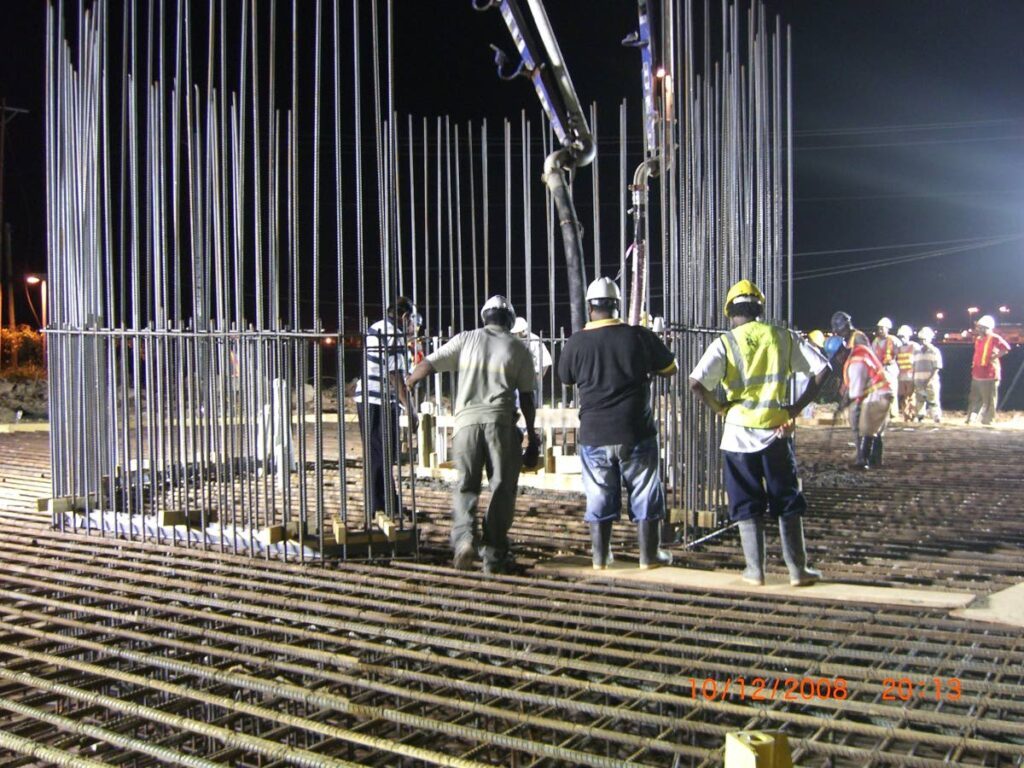Iconic Piarco air traffic control tower

On arrival at Piarco International Airport, a first-time visitor would easily realise that TT is a first-world country after having sight of the air traffic control (ATC) tower.
The ATC tower, like the downtown Port of Spain skyline, are icons of a developed country. The ATC tower is linked to Prime Minister Patrick Manning’s Vision 2020, the goal of which was the transformation of TT into a developed nation by the year 2020.
During his 2008 budget presentation on August 20, 2007, Manning outlined that Vision 2020 was founded on five developmental pillars – developing innovative people; nurturing a caring society; enabling competitive business; investing in sound infrastructure and the environment; and promoting effective government.
At that time, the TT Civil Aviation Authority (TTCAA) was finalising the designs for its ultra-modern civil aviation administrative complex.
The complex initial designs did not include a new control tower as senior air navigation personnel believed that the existing tower could be refurbished and equipped with new display and communication equipment.
In 2007, this columnist as the then director general of civil aviation (DGCA) visited the very impressive FAA terminal radar approach control tower (TRACON) at Miami International Airport.
On returning to TT, a sketch of a new tower external outline with a sub-cab was prepared. Chairman of the board Maj Gen Ralph Brown and the DGCA held a meeting with Manning where it was proposed to him that a new tower be constructed which will be an icon of first-world status consistent with Vision 2020. Manning was quite excited and gave the project his blessings with a firm instruction that the project be executed on the basis of public tendering.
After evaluation of the tenders, Aeronav of Canada was awarded a full turn-key contract to build the new tower at a cost of US$4.5 million. Aeronav is a major supplier of ATC control towers and has built numerous control towers in the hurricane prone Caribbean. In addition, Aeronav supplies mobile towers to a number of countries worldwide.
The construction of the new tower had many challenges requiring creative solutions. Before the new tower could be designed, a number of studies had to be done. This included hurricane, earthquake fault lines and geotechnical studies.
The geotechnical studies revealed that the proposed tower site area, like the surrounding areas had a high water table. The tower base is the most critical part of a tower structure.

Consequently, the Aeronav design required that the tower base sit on 26 reinforced concrete piles 24 feet deep and 48 inches in diameter. The high water table required bentonite piling.
A Venezuelan company Cimientos specialising in bentonite piling was already onsite doing bentonite piling for the main complex. Cimientos was contracted to install the 26 piles for the control tower. Bentonite is a clayey material used for soil stabilisation work during piling works, bentonite powder is mixed with water to make a slurry with specified parameters and poured into the pile borehole. This stabilises the sides of the borehole preventing it from collapsing.
The civil works for the tower base and the 145-foot high tower shaft were performed by local Sangre Grande based contractor Gilles Construction under the supervision of Aeronav.
The form work for the base consisted of layered steel mats fabricated using one-inch diameter high tensile steel bars that were structurally interweaved with the two-inch diameter reinforcing steel bars of the 26 pile caps.
The base of the control tower required 85 truckloads of concrete which had to be poured continuously.
Coosals Ltd whose concrete plant is located approximately four kilometres from the tower site was contracted to supply the concrete. Meetings were held with Aeronav, Gilles and Coosals concrete technologists to discuss the concrete mix design and the processes associated with concrete hydration. In order to control the temperature of the concrete which is critical during a mass pour, the concrete had to be mixed with ice cold water.
Test specimens were prepared and after 28 days were successfully tested by CARRI for structural integrity.
At that time, the Golden Grove Road bridge across the Caroni river was a single-lane bridge and the cause of frequent traffic pile-ups during the day.
Therefore, the concrete pour was scheduled to be done during the hours of 6 pm to 6 am to minimise delivery disruptions due to road traffic.
A backup generator was rented to provide electrical power for lighting and to operate the high-intensity concrete vibrators in the event of T&TEC power disruptions.
Coosals also provided a standby concrete pump.
On December 10 2008, the day of the concrete pour, a full rehearsal was conducted at 5 pm to ensure that all primary and backup systems were fully operational.
The first truckload of concrete arrived at 5:50 pm The concrete, like all subsequent truckloads, was tested for temperature and consistency prior to being poured onto the base.
At 7:20 am the following day the concrete pour was flawlessly completed. The area above the base was insulated with 12-inch thick foam to reduce heat loss, thereby ensuring that the entire concrete base cooled evenly. The tower shaft was designed by Aeronav with provisions for an elevator, an internal emergency staircase and plumbing and electrical services.
The sub-cab and the tower control cab were manufactured by Aeronav in Canada and shipped to TT for installation after the main shaft was completed. The tower sub-cab is fully equipped with a kitchenette, library, toilet facilities and a rest area.
With the control cab installed, the total height of the tower is 155 feet above ground and satisfies ICAO requirements whereby, the acute angle formed between a hypotenuse line drawn from the top of the control tower to the centreline of the runway and the base cannot exceed three degrees.
In August 2011, the new control tower was formally commissioned by the Minister of Transport Dr Devant Maharaj.


Comments
"Iconic Piarco air traffic control tower"